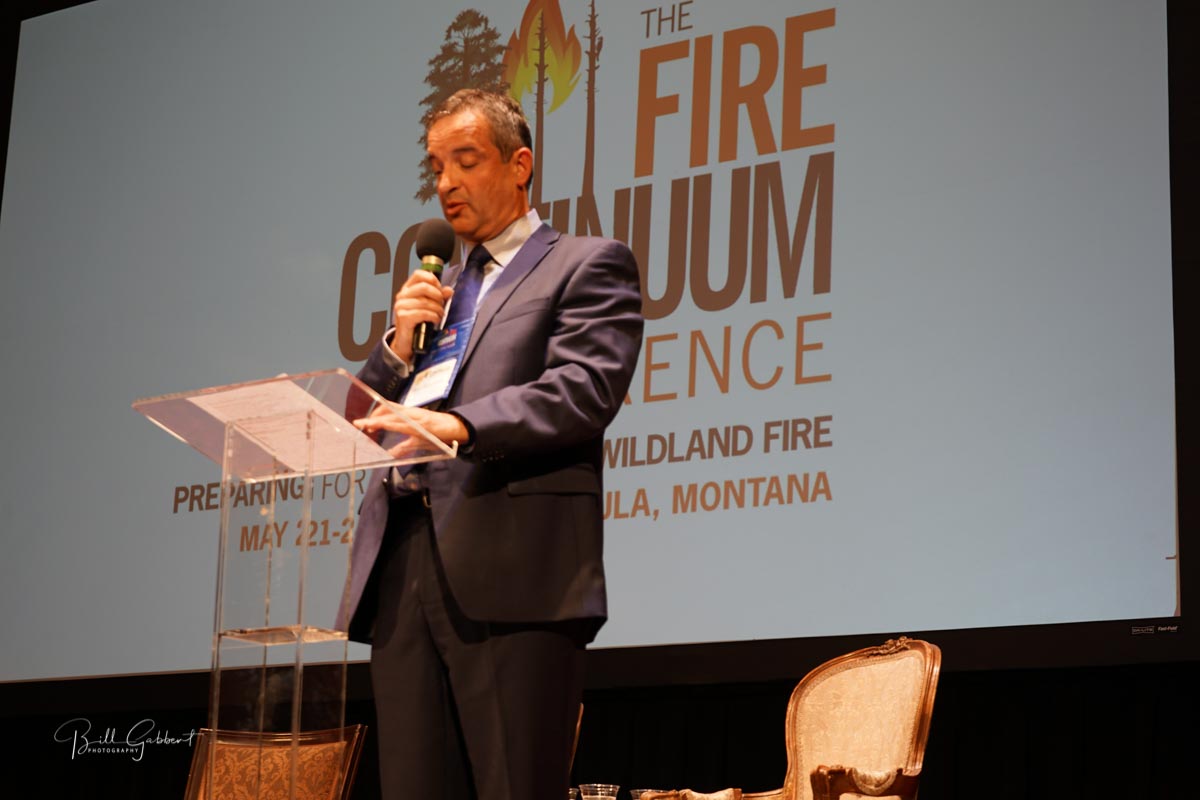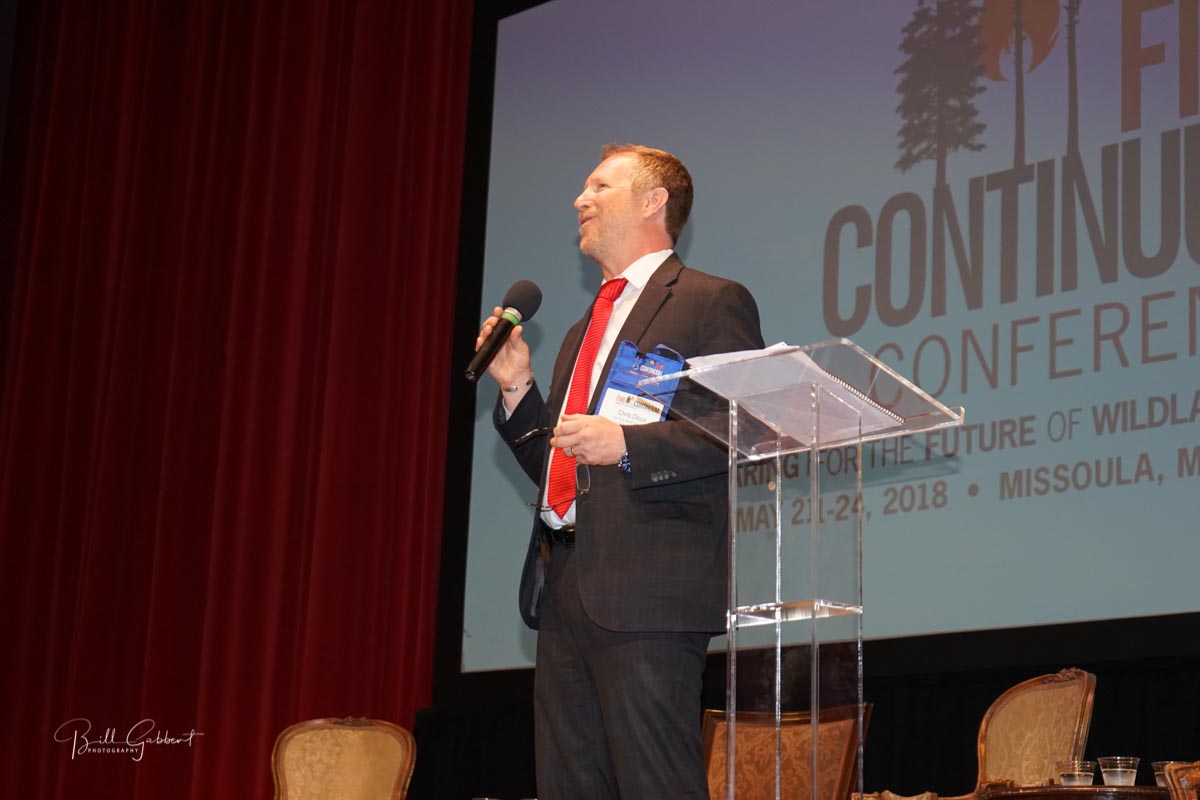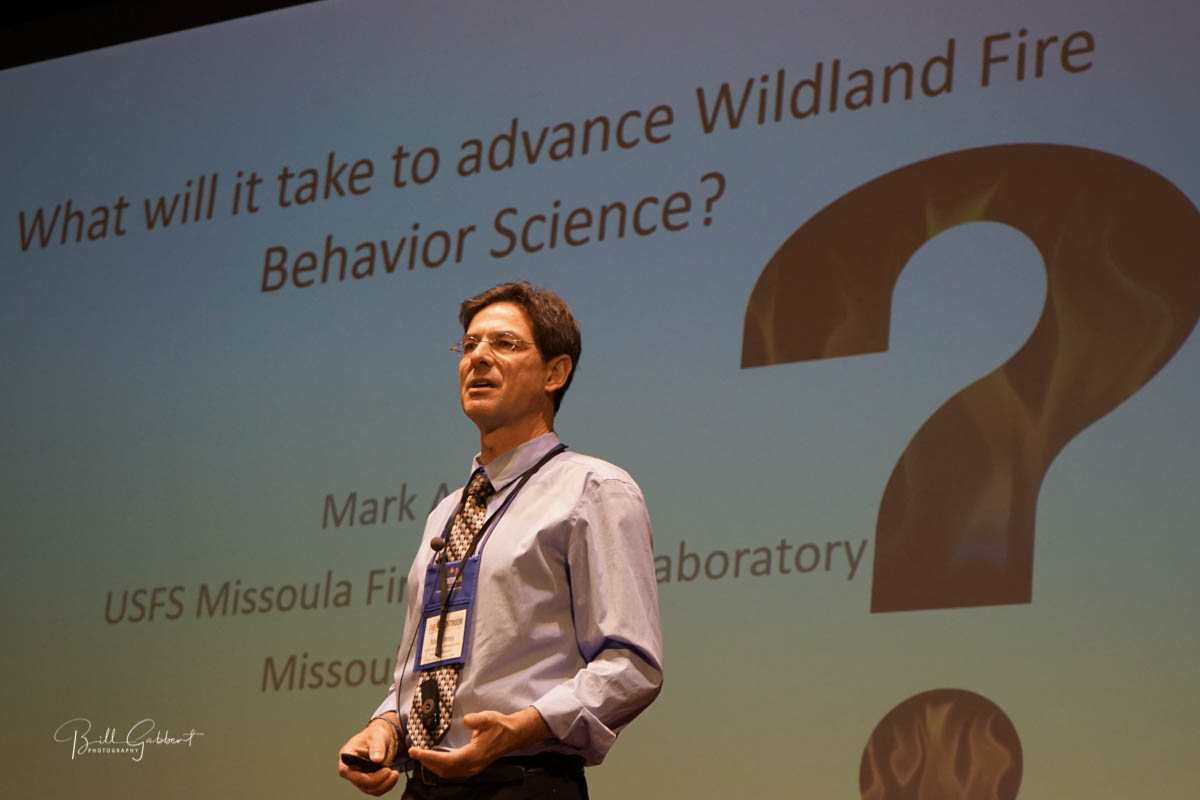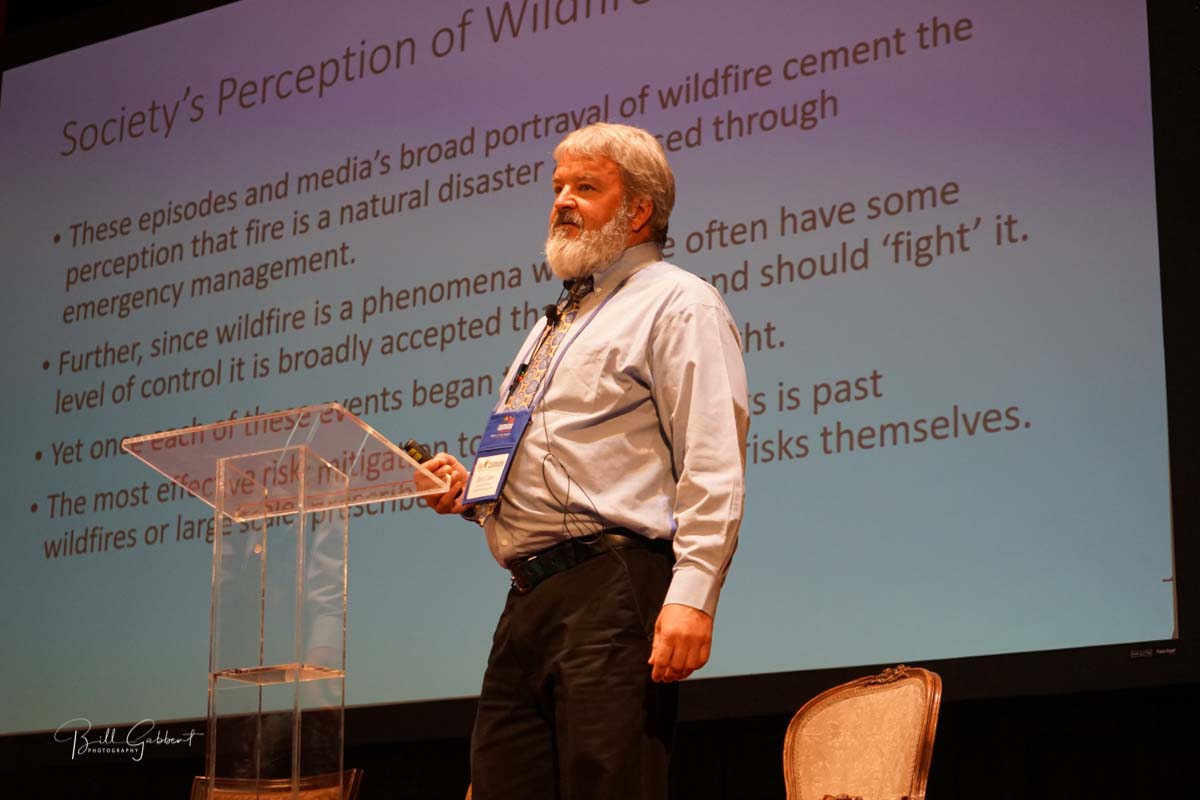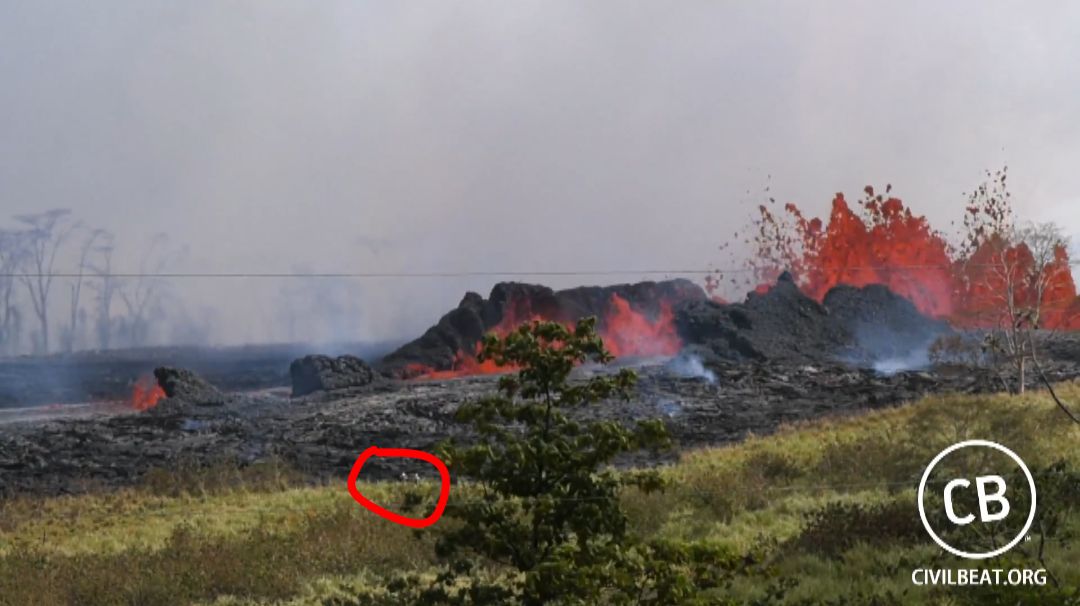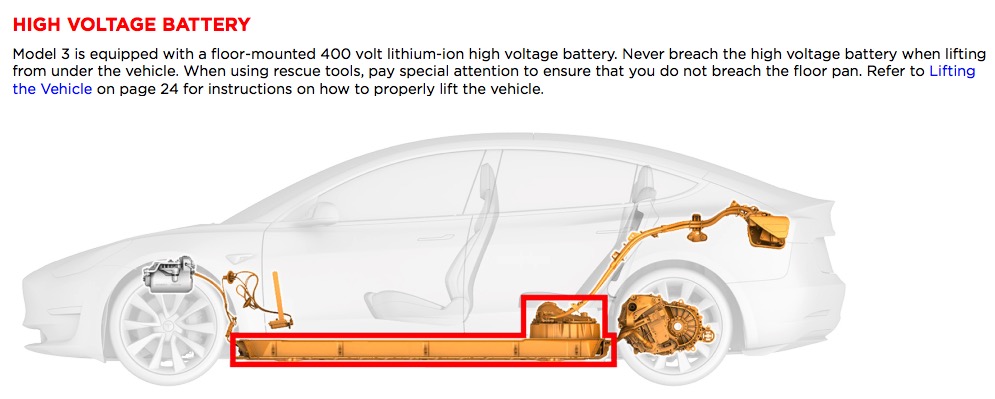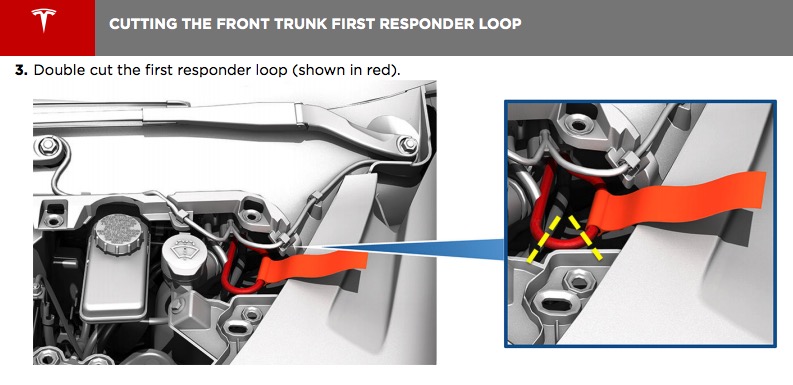Above: Vicki Christiansen, interim Chief of the U.S. Forest Service, addresses the participants at the Fire Continuum conference in Missoula, May 21, 2018.
A fire conference with an unusual name began Monday in Missoula. The “Fire Continuum Conference” is organized by the International Association of Wildland Fire and the Association for Fire Ecology with a theme of preparing for the future of wildland fire. It has drawn 655 participants from approximately 20 countries who are faced this week with the difficult task of choosing from 400 workshops, presentations, and field trips.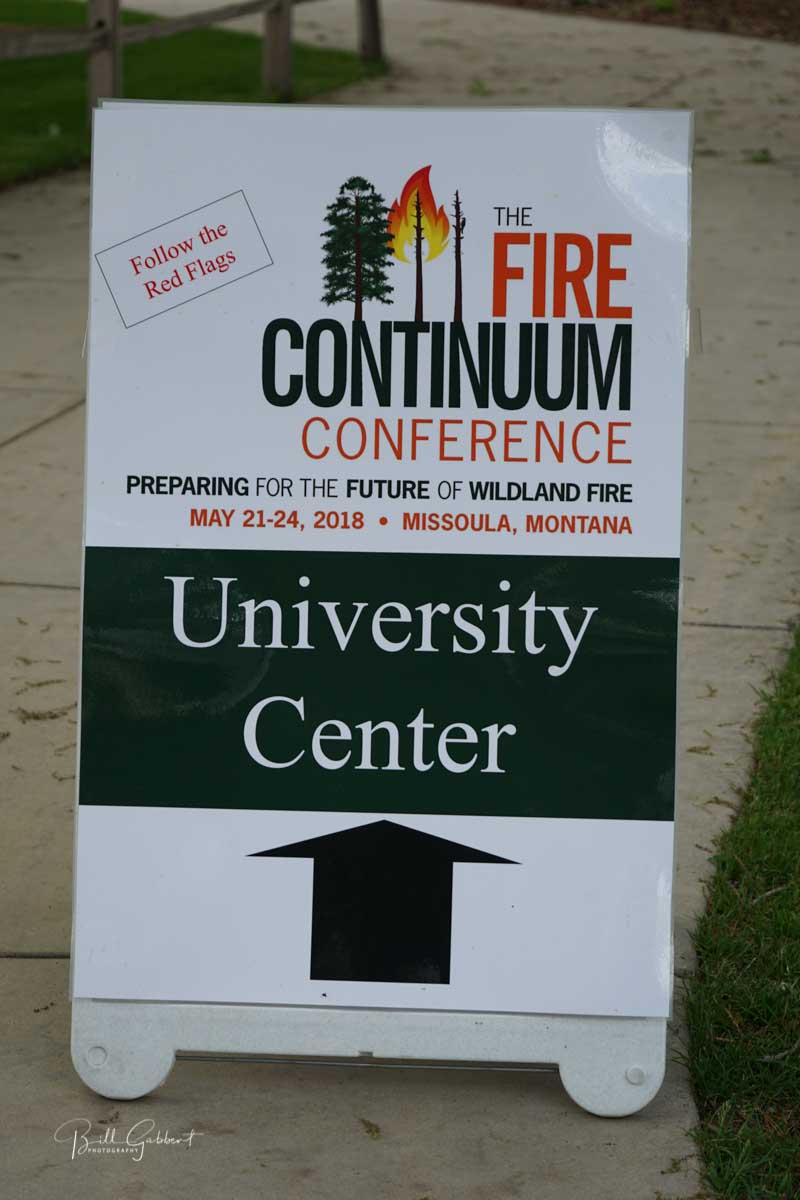
It kicked off Monday with a keynote address by Vicki Christiansen, the interim Chief of the U.S. Forest Service who talked about four “gnarly challenges”– drought, fuel buildup, growth in the wildland-urban interface, and fire exclusion compounded by climate change. It is not often that we hear someone from the present administration talk about climate change.
Ms. Christiansen said that since 1910 there have been more than 1,000 deaths on wildland fires and the fatality rate is rising, with almost a quarter of those, 255, having occurred in the last 15 years. According to the U.S Fire Administration, wildland firefighters, she said, “are killed at a rate six times higher than structural firefighters”.
She also refuted the “narrative that has formed for some that the Forest Service firefighting is not aggressive enough”. She said “We will commit firefighters only under conditions where they can actually have a chance of succeeding in protecting important values at risk”.
The conference wraps up Thursday. We will have a number of articles on Wildfire Today and Fire Aviation about the happenings in Missoula.
The video below is just to give you a quick look to see which organizations were exhibiting at the no host social event, the first night at the Fire Continuum Conference, May 21, 2018.
Below are photos of other speakers at the conference .
